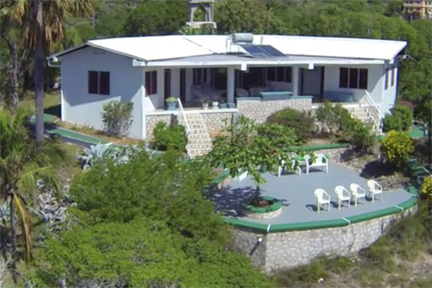Published by Saddlebag Dispatches in December 2020
In the middle of the last century there were maybe fifty mustangs roaming west-central Nevada’s Fish Lake Valley, and catching one was easier than you might think.
Despite its name, the valley – twenty miles long and skinny,  narrowed by tall-shouldered mountains – had no lake, let alone fish. Apart from dug or bored wells on ranches, there was only one place where water pooled to the surface and a wild horse could drink, a shallow pond hardly ten yards wide. Keep the mustangs away from that water for a couple of days, and they would be thirsty enough to overcome fear or even horse sense.
narrowed by tall-shouldered mountains – had no lake, let alone fish. Apart from dug or bored wells on ranches, there was only one place where water pooled to the surface and a wild horse could drink, a shallow pond hardly ten yards wide. Keep the mustangs away from that water for a couple of days, and they would be thirsty enough to overcome fear or even horse sense.
Maury was a kid from Los Angeles who wanted to be a cowboy, which meant he ought to have his own tack and his own horse. He could borrow a beat-up saddle and bridle long enough to make some money and buy his own. But even best friends didn’t lend horses, and ranches didn’t always have a spare he could ride, so he needed to catch one.
The marriage of hungry kid and thirsty horse was just a matter of planning and patience.
Most mustangs were descendants of the steeds that got away from the Spanish conquistadores, having been brought from the Iberian peninsula where Don Quixote would have recognized them. The word is derived from the ancient Spanish mustengo, which meant maybe feral or stray horse or ownerless beast.
Strictly speaking, all the mustangs in the American West weren’t, and still aren’t, ownerless: They belong to the BLM, the federal Bureau of Land Management. In those days, the numbers were manageable, but the feds were spread thin and had only a vague idea how many horses they were overseeing. Or under-seeing. Poaching a mustang was a crime unlikely to be noticed.
The first step was to build a temporary corral around that watering hole, making it a trap. Conveniently, the scene of the action was near the foot of Gilbert Pass, which carried us over from our Swinging T Ranch, in the valley to the south. It was a few miles east of the Oasis Ranch, at the lowest point in the valley.
The conventional wisdom said one could just string some barbed wire on stout posts, but the result would have been a lot of bloodied mustangs, maybe some infections and perhaps some BLM attention. Maury took the advice of Scotty Jones, our ranch manager, that time spent on some stout wooden rails at chest height would be worthwhile.
The horses would be skittish about going into any enclosure, Scotty said, but a good thirst would drive them into a wood or wire corral, either one, so long as the opening – there wouldn’t be an actual gate — wasn’t too narrow.
There was, at that time, ample raw material for a wooden fence: A railroad had run the length of the valley for an over-optimistic decade in the late 1800s before Silver Peak, a mining enterprise and town, gave up. Wood doesn’t rot on bone-dry desert land. There were still railroad ties for the taking, stout enough for posts and rails that even wild horses couldn’t break – reinforced with just enough barbed wire to remind them that trying was painful.
Maury persuaded José, another would-be cowboy, that he too wanted a free horse, and the two of them spent two weeks at the job, borrowing a pickup from our ranch. They used bolts and baling wire rather than nails, which meant the fence would have some give to it when panicked mustangs slammed into it, and also meant they could take it apart easily when or if the time came.
It wasn’t long before the tracks in the dry desert floor suggested a lot of unshod horses were milling around outside the new enclosure and then — almost single-file, presumably following their leader — risking the enclosure to slake their thirsts.
The boys enlisted Eddie Washburn to come inspect. Eddie, our Paiute cowboy, had an amazing ability to read tracks. He confirmed their reading that the mustangs were still skittish about this new structure. Insisting that they had to observe the herd when it was actually there, he led them to a cluster of piñon pines perhaps a quarter-mile from the corralled waterhole.
They proceeded, at his insistence, to spend the rest of the day and the whole of the night unfed and in utter silence — a lesson in patience for the two boys, and a gift from Eddie’s people who had been here before the Spanish and their horses.
The mustangs came at dawn the next day, only hesitating a moment before trotting in to bury their muzzles and drink. Eddie sized them up. Not all great specimens, he whispered to the boys, directing their attention to flaws. Some were old and spavined, perhaps products of too much inbreeding. Some stallions showed the scars of fights with sharp hooves and teeth. He didn’t like the idea of breaking a stallion anyway: Time healing from castration would delay breaking them to ride.
He pointed out a couple of very young mares, though – looking three or four years old, still fillies – that looked promising: a coppery sorrel with a thick mane and a white blaze the length of her nose; and a darker one, almost chestnut, with white stockings and a banner of a white tail. He had the boys look well, to be able to pick them out in a herd at full gallop.
At length the horses, tanked up, drifted away. Eddie and the boys got into the pickup and drove back to the ranch for a late breakfast. “Today’s Tuesday,” Eddie said. “Tomorrow you’re going to start keeping them thirsty.” Maury would ride over and station himself on horseback in the wide mouth of the makeshift corral, prepared to shout and canter around if the herd came for a drink. José would ride over in the afternoon to spell him, and they would take turns sleeping and blocking for three days.
By Friday afternoon it took both of them patrolling the opening to keep the herd from thundering past them and into the corral, but they persisted, and the mustangs spent another dry night.
Early Saturday morning, Eddie joined by Scotty Jones and Slim, another cowboy, put their horses – all three rode good quarter horses – into a trailer and towed them over to Fish Lake, parking in that copse of piñon pines. They led their horses out and tightened up the cinches of their saddles.
All horses take a deep breath and puff up their chests when being saddled, so it’s wise to wait a few minutes until they relax, then tighten up the cinch again. This morning they would be roping some vigorously resistant mustangs and dallying their lariats – snubbing them – on the horns of their saddles. The last thing you wanted was to have a mustang pull your saddle out from under you. The three men waited and re-cinched twice, then took ropes in hand and called the two boys over from the throat of the corral.
“You stay back here until we call you,” Eddie told them. “It’s going to be hairy for a few minutes, and your horses could get a little twitchy. Don’t want you getting thrown and trampled. We’re going to try to rope those two fillies, and a third if we can, and then we’ll have you come heel them.”
The mustang herd was already right there, nervous and dying of thirst. Within a few minutes of the boys’ retreat to the piñons, the white stallion leader whinnied loudly and charged into the corral, followed by the whole herd.
A good quarter horse can do a short burst at almost 50 miles an hour. In less than a half-minute, while the mustangs were jostling each other to be muzzle-deep drinking, all three men were in the opening. Scotty stayed there to slow the exodus; the other two rode in, lassos swinging open, each looking for one of the filly targets amid a sudden melée of rearing, flailing horseflesh.
They roped the targeted fillies. Scotty tried for one more as the herd thundered out and away into Fish Lake Valley but missed. That left two captives thrashing around at the end of lariats, trying desperately to join their departing pals. At Eddie’s direction, the boys came down from the piñons.
Heeling cattle was everyday work: One cowboy roped a steer’s head and towed it gently away while his partner threw an open loop – the rope stiff enough to briefly stand vertically – ahead of the rear feet. One step forward, snatch the loop tight, dally the rope on the horn and back up your horse, and you had the animal strung out head-and-heels for whatever work was needed.
Mustangs proved a helluva lot harder to heel than cattle, but they finally had the two fillies stretched out, shivering with fear but subdued, apparently resigned to being caught.
One option was to topple them to the ground, truss them thoroughly and drag them to a truck, but the Eddie and Scotty thought it wiser to just lead them over Gilbert Pass. “They know they’re caught,” Eddie said. “I’ll ride with you, so we’ll have three horses to crowd them if we need to.”
It was a three-hour ride, but the mustangs were surprisingly docile, and before suppertime they were safely ensconced in a small corral at the ranch with water, hay and oats. Maury and José had a good meal and went back to the corral to talk to their new acquisitions – “Talk to ‘em all you can,” Eddie had said. “Get ‘em used to your voices” – and then got a good night’s sleep.
The rest was just a matter of time and patience. In the morning they roped the fillies, snubbed them to a stout section of corral, and put halters on them. They didn’t like that and stomped around for a while. When they were subdued again, the boys put beat-up old pack saddles on them, cinched them up tighter, and turned them loose to buck, jump and roll, trying in vain to get rid of the unaccustomed encumbrance. When they stopped fighting the saddles, the boys took them off for a while, offered a canvas bag of oats, let them rest, and did it again.
After two days of that, it was time to put on a real saddle and break them to ride. Maury, who’d claimed the one with the blaze, went first. Scotty and Eddie both advised a larger corral, making it less likely she would mash his leg against a fence post or rail. They and José all saddled up, ready to pinion the filly if need be, or rescue Maury if he were thrown.
It was a wild ride, but he stayed aboard. After a while, Scotty and Eddie rode up on the flanks to settle her down and make her circle the corral twice before Maury dismounted and rewarded her with more oats. Then José repeated the identical routine with his chestnut filly.
They did that twice every day, a longer ride every time. After a couple of days, Scotty and Eddie decided the two boys could handle the project alone. After a week, the boys cautiously rode out beyond the corral each day, and finally went for long rides together out into the desert range.
That was it, almost. For most of the next two years – and occasionally even later — both horses started the day’s work with a little bucking performance, enough to loosen up the joints but easy enough to ride through.
That was inconsequential — routine even with some of the other cowboys’ mounts. Every one of them was, after all, descended from forebears who had carried conquistadores into the New World. If they wanted to complain a few minutes in the morning about setting out to herd cattle, who could blame them?
-End-





